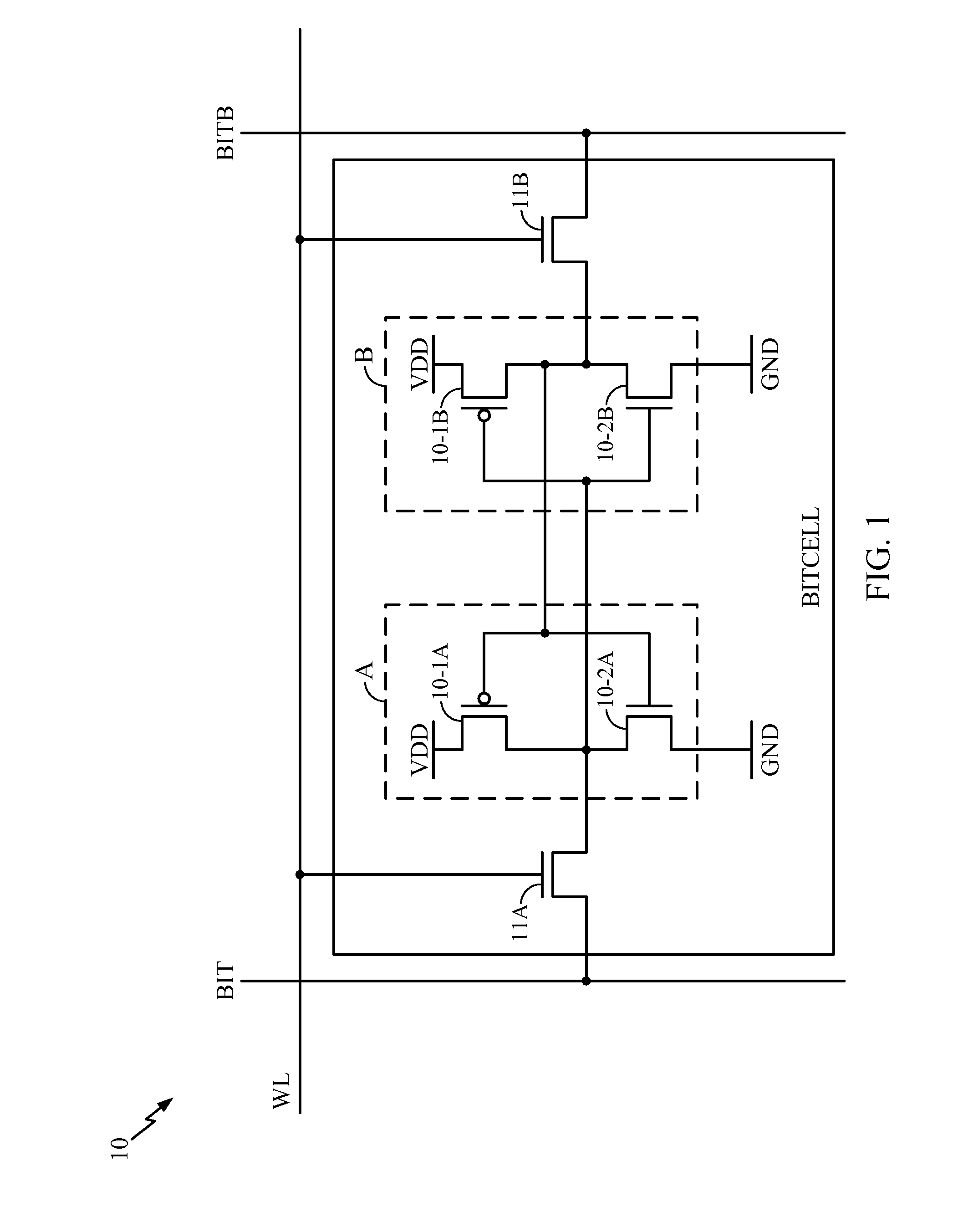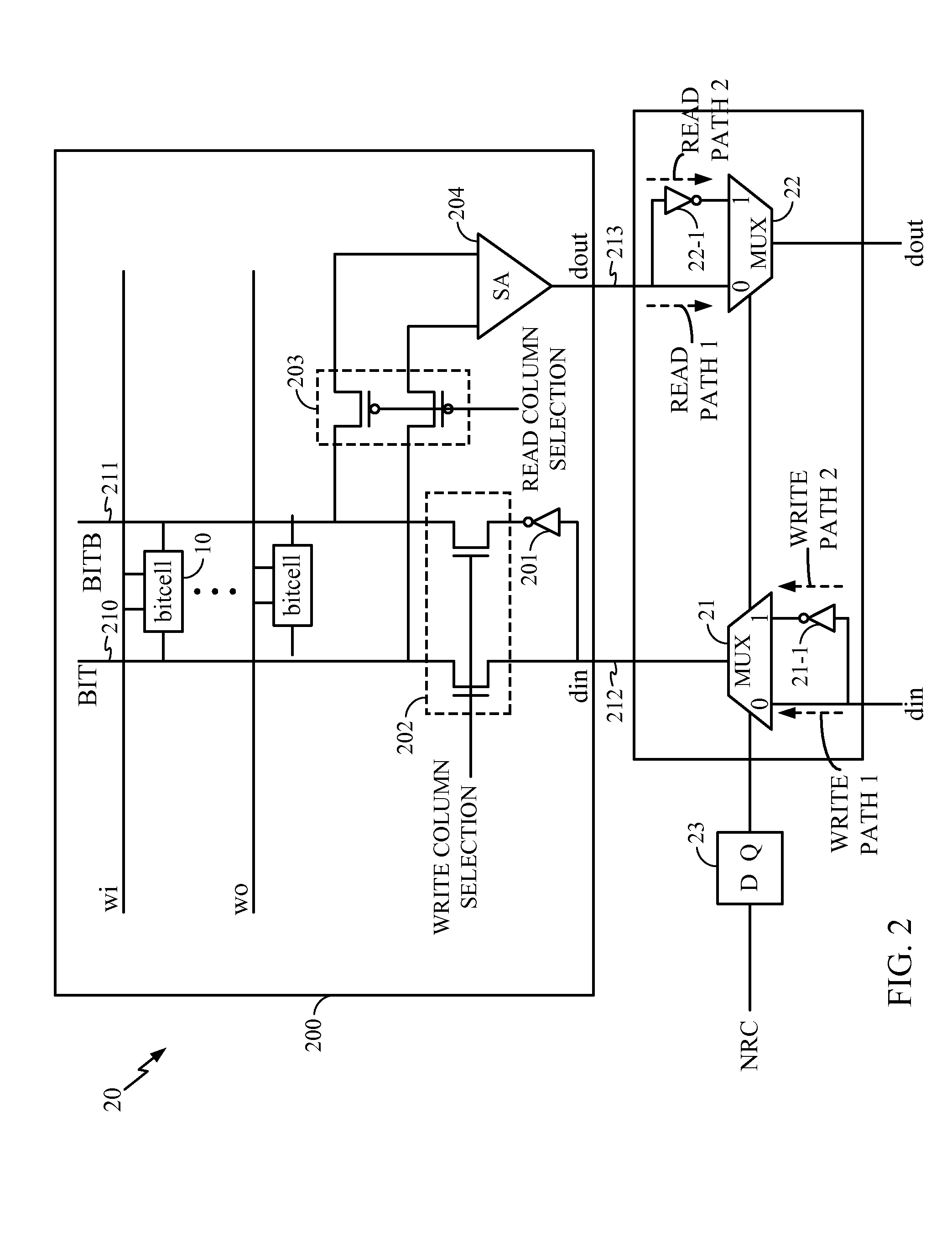Systems and Methods for Handling Negative Bias Temperature Instability Stress in Memory Bitcells
a temperature instability and memory bitcell technology, applied in static storage, information storage, digital storage, etc., can solve the problems of significant threshold voltage shift, drive current reduction, and memory bitcells, once set, are maintained for very long periods of time, and achieve the effect of reducing stress
- Summary
- Abstract
- Description
- Claims
- Application Information
AI Technical Summary
Benefits of technology
Problems solved by technology
Method used
Image
Examples
Embodiment Construction
[0011]FIG. 1 shows a typical prior art six transistor static random access memory (SRAM) bitcell 10 in which devices 10-1A and 10-1B are pull-up devices, devices 10-2A and 10-2B are pull-down devices and devices 11A and 11B are pass gates. The bitcell 10 has two nodes, namely A and B with each section having a p-type metal oxide semiconductor (PMOS) and a n-type metal oxide semiconductor (NMOS) device, such as devices 10-1A and 10-2A. Assume that node A is storing a “1” while node B is storing a “0”. Also assume that the values stored in bitcell 10 are held for a long period of time. In such a situation, device 10-1B has a negative bias voltage between its gate and its source. Thus, device 10-1B is stressed due to the NBTI effect thereon. Because device 10-1A is storing a “1”, the bias voltage across its gate and source is negligible and thus device 10-1A is not under stress.
[0012]If this condition were allowed to continue for a long period of time, the NBTI stress would cause the t...
PUM
 Login to View More
Login to View More Abstract
Description
Claims
Application Information
 Login to View More
Login to View More - R&D
- Intellectual Property
- Life Sciences
- Materials
- Tech Scout
- Unparalleled Data Quality
- Higher Quality Content
- 60% Fewer Hallucinations
Browse by: Latest US Patents, China's latest patents, Technical Efficacy Thesaurus, Application Domain, Technology Topic, Popular Technical Reports.
© 2025 PatSnap. All rights reserved.Legal|Privacy policy|Modern Slavery Act Transparency Statement|Sitemap|About US| Contact US: help@patsnap.com



